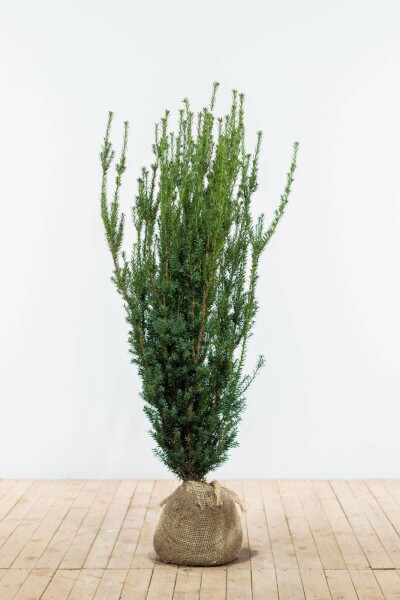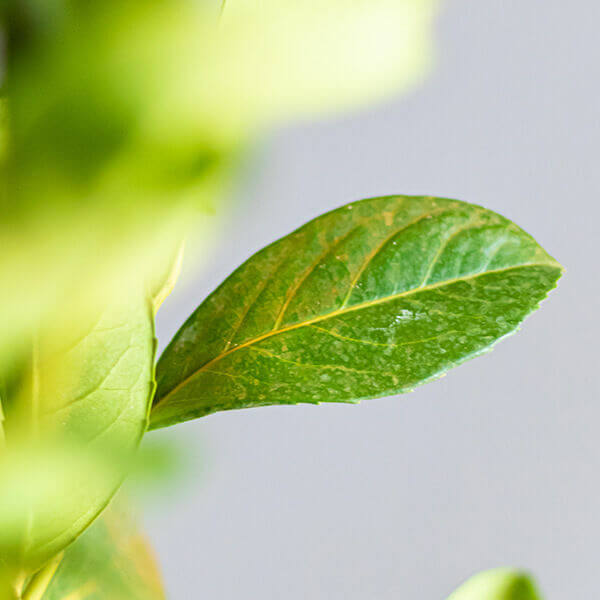Hedge Plants For Creating Shade
Improve your garden's attraction with rich hedge varieties such as Yew (Taxus), Thuja, Laurel, Photinia, and Bamboo, commemorated for their structural integrity and ecological benefits.
Yew and Thuja supply evergreen coverage and winter season strength, while Laurel provides quick growth and broad, aromatic leaves.
Photinia adds seasonal beauty with its dynamic red foliage, and Bamboo lends a low-maintenance, peaceful atmosphere.
These hedges improve air quality, lower noise, and produce tranquil, personal areas.
Proper planting, spacing, and upkeep make sure energetic development and ecological consistency.
Explore how these lavish ranges can elevate your garden's charm and wellness.
Key Takeaways
Transform Your Garden With Lush Hedge Ranges
- Select Yew for its thick, evergreen development and unrivaled longevity.
- Go with Laurel for its fast growth and broad leaves, guaranteeing fast personal privacy.
- Pick Photinia for its lively seasonal foliage, which turns a striking dark red.
- Utilize Bamboo for a low-maintenance, winter-hardy hedge with aesthetic appeal.
- Area plants 2-3 per meter and prune frequently for optimal growth and health.
Popular Hedge Plants
When transforming a garden with lush hedge varieties, it's important to think about popular hedge plants such as Yew, Thuja, Laurel, and Photinia due to their special attributes and advantages.
Yew (Taxus) is extremely respected for its durability and thick, green development, making it a prime choice for sustaining landscapes.
Thuja is noted for its evergreen foliage and robust winter resilience.
Photinia adds seasonal vibrancy with red leaves that darken over time, creating dynamic visual appeal.
Laurel uses rapid development and aromatic, broad leaves, perfect for fast privacy.
In Addition, Bamboo is an excellent choice for ambiance, offering a low-maintenance, winter-hardy option that boosts the garden's visual with its stylish, swaying canes.
These choices cater to a range of horticultural requirements and preferences.
Advantages of Garden Hedges
Garden hedges provide a wide variety of benefits, making them an important addition to any landscape. These natural barriers are cost-effective to carry out and supply substantial wind security, improving air circulation and contributing to sound reduction. The dense foliage of hedges like Thuja and Beech guarantees privacy by obstructing visibility, creating a remote and tranquil environment.
Hedges likewise play an important function in microclimate policy, providing a steady environment that fosters plant development and lessens temperature variations. Their elaborate leaf structures filter toxins, improving air quality and adding to a healthier garden environment.
Furthermore, hedges master noise decrease, absorbing and deflecting acoustic waves to lower ambient sound levels. This dual performance of providing both acoustic and visual privacy improves the total tranquility and visual appeal of any garden.
Planting and Upkeep Tips
For an effective hedge, meticulous preparation of the planting location is crucial. Guarantee the soil has correct pH and drain to support strong root development.
Area the plants properly for the chosen species. Water the hedge regularly during its initial development stage, adjusting as needed with seasonal changes.
Carry out a organized pest control and disease avoidance method, using organic or chemical treatments when needed. Frequently inspect for aphids, mites, and fungal infections.
Apply mulch to retain moisture and suppress weeds. Seasonal pruning promotes thick growth and air circulation, vital for plant health.
Following these standards will assist you cultivate a lively, well-maintained hedge that improves the appeal of your garden.
Spacing and Trimming Standards
Spacing and Cutting Standards
Correct spacing and cutting are vital for cultivating healthy, aesthetically appealing hedges. Appropriate spacing makes sure each plant gets enough nutrients, light, and air flow.
Follow these standards for optimal hedge maintenance:
- Spacing: Position hedge plants 2-3 plants per meter to encourage robust development.
- Pruning Techniques: Routine pruning is necessary for keeping wanted hedge height and shape. Cut brand-new development in summertime and cut back older wood during winter season.
- Seasonal Care: Adjust cutting schedules and approaches according to seasonal requirements to make sure plant health.
- Hedge Height: Routinely screen and trim to keep the wanted hedge height and accomplish uniform aesthetic appeals.
Complying with these actions will ensure your hedge thrives, boosting both the appeal and performance of your garden.
Selecting the Right Hedge
Choosing the Right Hedge
Picking the suitable hedge involves examining elements such as mature height, foliage density, and ecological durability. Successful hedge plant choice requires comprehending each species' growth qualities and site-specific adaptability.
For instance, Yew (Taxus) offers exceptional durability and dense development, while Thuja is notable for its winter season resilience. In addition, considering upkeep requirements is essential; fast-growing types like Laurel or Privet demand routine trimming, whereas low-maintenance alternatives like Bamboo or Ivy might be more effective for those seeking very little upkeep.
Ecological factors such as soil type, light accessibility, and wetness conditions ought to likewise direct the choice procedure. This cautious method makes sure the chosen hedges will flourish, offering both visual and functional benefits to the garden landscape.
Delivery and Planting Advice
To guarantee your hedge plants prosper, they must be provided by specialized couriers and planted quickly upon arrival.
Follow these important steps for successful planting:
- Soil Preparation: Improve the soil with natural matter to improve drainage and nutrient material.
- Planting Depth: Develop a trench twice the width and equal to the depth of the root ball.
- Watering Strategies: Water completely after planting, keeping the soil regularly damp but not filled.
- Mulching: Apply a layer of mulch to retain wetness and suppress weeds.
Customer Assistance and Service
Provided the crucial function of timely assistance in horticultural pursuits, our consumer assistance team is readily available six days a week through telephone, e-mail, and social networks to offer skilled recommendations and promptly deal with any issues. Their commitment to quick reaction times ensures client satisfaction by solving queries related to plant health, optimum planting approaches, and maintenance schedules.

-------------------
Email
This comprehensive assistance system, enhanced by an outstanding 9.3/ 10 customer ranking, highlights our commitment to boosting the gardening experience for every single client.
Regularly Asked Concerns
How Long Does It Consider Hedge Plants to Establish?
Hedge plants usually require one to 3 years to become totally established, with the specific duration varying by types and growing conditions.
Effective care throughout this critical duration is essential for robust growth. Constant watering, vigilant weed control, and suitable fertilizer application are pivotal in promoting strong root development.
For instance, fast-growing species like Laurel might develop quicker, while slower-growing ranges such as Yew might take longer. Persistent upkeep accelerates the establishment procedure, leading to healthy and thick hedges.
What Are the very best Hedge Plants for Privacy?
The question of the very best hedge plants for personal privacy involves assessing evergreen and deciduous alternatives.
Evergreen hedges like Thuja, Laurel, and Cypress provide year-round coverage, guaranteeing constant personal privacy.
In contrast, deciduous hedges such as Beech provide seasonal privacy, shedding leaves in chillier months.
Secret upkeep tips for privacy hedges include regular trimming, fertilizing in spring, and appropriate spacing-- usually 2 to 3 plants per meter.
In addition, consistent watering and thorough weed removal are crucial for promoting healthy, dense growth.
Can Hedge Plants Attract Wildlife to My Garden?
Yes, hedge plants Additional resources can attract wildlife to your garden by providing important benefits like shelter, food, and nesting sites, thus enhancing local biodiversity. For example, yew, holly, and laurel are outstanding for drawing in birds, while ivy supports a variety of bugs.
However, it is necessary to note that there are some drawbacks, such as increased upkeep to handle insects and regular maintenance. Thoroughly choosing and preserving hedge ranges can help balance these disadvantages and benefits, eventually fostering a sustainable and dynamic ecosystem in your garden.
Exist Any Blooming Hedge Plants Available?
Yes, there are flowering hedge plants available that can boost the charm of your garden.
For example, Elaeagnus, likewise referred to as Olive Willow, produces aromatic white flowers in the fall, adding a touch of sophistication.
Photinia, another popular choice, showcases lively red leaves that develop into an abundant green, producing a dynamic visual result throughout the seasons.
To ensure these plants prosper, it's important to practice correct pruning techniques and seasonal upkeep, such as trimming brand-new development in the summer and cutting down in the winter.
These measures will assist preserve the health and visual appeal of your flowering hedges.
How Do I Avoid Pests in My Hedge Plants?
To avoid bugs in hedge plants, utilize natural pest control approaches and maintain appropriate hedge care. Present beneficial bugs like ladybugs, which prey on hazardous bugs, to create a balanced community.
Frequently inspect your hedges for signs of invasion and without delay remove any affected parts to prevent the spread. Guarantee the health of your hedges by using well balanced fertilizers and supplying adequate water.
Use mulching to keep soil wetness and correct spacing to lower plant tension and promote robust development. These practices jointly assist in minimizing pest issues and maintaining a healthy hedge.
Conclusion
In essence, choosing the right hedge varieties such as Yew, Thuja, and Laurel can transform any garden into a tranquil sanctuary. These plants supply year-round greenery, enhance visual appeal, and deal useful benefits like noise reduction and wind defense.
Correct planting strategies, precise spacing, consistent watering, and seasonal trimming are vital for optimum development.
Trusted shipment services and professional client support ensure a smooth experience from purchase to planting, making it simpler than ever to elevate your outside space.
Garden hedges offer a multitude of advantages, making them a valuable addition to any landscape. These natural barriers are cost-effective to carry out and offer significant wind defense, improving air circulation and contributing to sound decrease. The dense foliage of hedges like Thuja and Beech makes sure privacy by obstructing presence, producing a secluded and tranquil environment.

Pruning Methods: Regular pruning is vital for preserving desired hedge height and shape. Trim brand-new development in summertime and cut back older wood during winter.